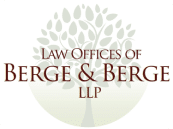Regular readers of our blog posts at the established Bay Area Law Offices of Berge & Berge are routinely minded that trust creation can materially promote the interests of estate planning individuals and families.
Granted, trusts are not applicable to every planning situation. No legal instrument is. The broad universe of trust types renders it likely, though, that one or more trusts can at least be profitably considered in any given case.
One core reason driving trusts’ broad utility easily explains why. We stress on our website that, “A trust may enable you to designate someone to hold and/or distribute your property according to your wishes upon your passing.”
What are the basics of a personal asset trust?
Consider a living trust. That instrument is created while a grantor is alive, giving that individual decision-making powers over how the trust is structured and operates. Typically, named beneficiaries receive inheritances directly from the trust following the creator’s death pursuant to any stated trust directives.
An in-depth online overview of personal asset trusts notes that those planning instruments provide for a different outcome. In lieu of beneficiaries receiving inheritances directly, they are provided for via the personal asset trust, “which springs out of the living trust.”
What special benefits does a personal asset trust confer?
As noted in the above-cited primer, a personal asset trust “can be controlled by each beneficiary … to virtually give him or her all of the same rights as ownership, without the liability exposures ownership brings.”
That can yield powerful upsides concerning the continued protection of property and future flexibility. A proven estate planning legal team can provide detailed information.
